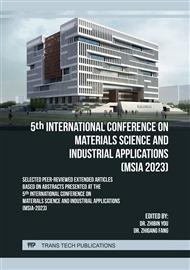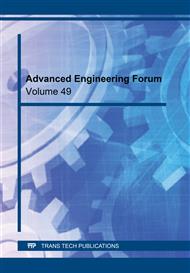p.1
p.9
p.15
p.29
p.43
p.57
p.79
p.91
p.103
Experimental Study on Dissolution Stability and Dispersion and their Influence on Tribological Properties for Reducing Friction and Prolonging Life of Armored Vehicle Engine Lubricating Oil Additives
Abstract:
A lubricating oil additive for armored vehicle engine was synthesized by ultrasonic dispersion and physical blending with polyisobutylene and poly alpha olefin as polymer matrix, nanoBN and nanoALN as antifriction materials and polyisobutylene succinimide as surfactant. Polymer-based lubricating oil additive, hydroxyl magnesium silicate powder additive, commercial anti-wear repairing agent Goldway and commercial anti-wear protective agent Chief were dispersed into 10W-40 armored vehicle engine special lubricating oil according to a certain mass fraction. The dissolution stability of different lubricating oil additives in lubricating oil was investigated by standing test. The effects of ultrasonic time and temperature on the dispersion of different kinds of lubricating oil additives in lubricating oil are investigated by using ultrasonic disperser and particle size analyzer. The MDW-5G multifunctional end-face friction and wear tester is used to simulate the actual working process of cylinder liner-piston ring in armored vehicles during driving, and tribological tests were carried out under conventional working conditions to evaluate the tribological properties of different lubricating oil additives. Scanning electron microscope was used to measure and analyze the wear surface morphology and friction interface elements after tribological test, and the lubrication mechanism of lubricating oil additives is revealed. The results show that the polymer-based lubricating oil additive has good dissolution stability and dispersion in lubricating oil. Compared with pure lubricating oil, the average friction coefficient of lubricating oil containing 3wt% polymer-based additives is 0.085, and the friction coefficient decreases by 38.8%. During the friction process, polymer-based lubricating oil additives form a self-repairing oil film to cover the surface of the sample through a series of complex physical and chemical reactions, which reduces the friction and wear between the grinding pairs and improves the lubricating performance of lubricating oil.
Info:
Periodical:
Pages:
15-27
Citation:
Online since:
May 2023
Authors:
Keywords:
Price:
Сopyright:
© 2023 Trans Tech Publications Ltd. All Rights Reserved
Share:
Citation:



